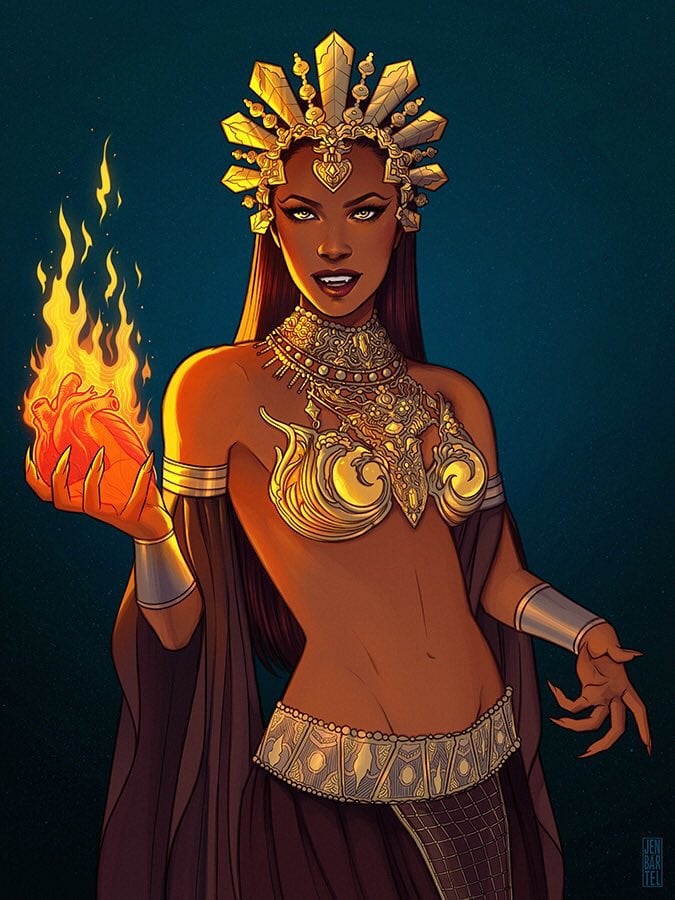Even today, gypsies are frequently feature in vampire fiction and film, no doubt influenced by Bram Stoker’s book, Dracula, in which the Szgany Roma served Dracula, carrying his boxes of earth and guarding him.
Traditional Romani beliefs include the idea that the dead soul enters a world similar to ours except that there is no death. The soul stays around the body and sometimes wants to come back. The Roma legends of the living dead added to and enriched the vampire legends of Hungary, Romania, and Slavic lands.
The most famous Indian deity associated with blood drinking is Kali, who has fangs, wears a garland of corpses or skulls and has four arms. Her temples are near the cremation grounds. She and the goddess Durga battled the demon Raktabija who could reproduce himself from each drop of blood spilled. Kali drank all his blood so none was spilled, thereby winning the battle and killing Raktabija.

Sara, or the Black Goddess, is the form in which Kali survived among Roma. Some Roma have a belief that the three Marys from the New Testament went to France and baptised a gypsy called Sara. They still hold a ceremony each May 24 in the French village where this is supposed to have occurred. Some refer to their Black Goddess as “Black Cally” or “Black Kali”.
One form of vampire in Romani folklore is called a mullo (one who is dead). This vampire is believed to return and do malicious things and/or suck the blood of a person (usually a relative who had caused their death, or hadn’t properly observed the burial ceremonies, or who kept the deceased’s possessions instead of destroying them as was proper).
Female vampires could return, lead a normal life and even marry but would exhaust the husband.
Anyone who had a hideous appearance, was missing a finger, or had appendages similar to those of an animal, etc., was believed to be a vampire. If a person died unseen, he would become a vampire; likewise if a corpse swelled before burial. Plants or dogs, cats, or even agricultural tools could become vampires. Pumpkins or melons kept in the house too long would start to move, make noises or show blood.
To get rid of a vampire people would hire a Dhampir (the son of a vampire and his widow) or a Moroi to detect the vampire. To ward off vampires, Gypsies drove steel or iron needles into a corpse’s heart and placed bits of steel in the mouth, over the eyes, ears and between the fingers at the time of burial. They also placed hawthorn in the corpse’s sock or drove a hawthorn stake through the legs. Further measures included driving stakes into the grave, pouring boiling water over it, decapitating the corpse, or burning it.
According to the late Serbian ethnologist Tatomir Vukanović, Roma people in Kosovo believed that vampires were invisible to most people. However, they could be seen “by a twin brother and sister born on a Saturday who wear their drawers and shirts inside out.” Likewise, a settlement could be protected from a vampire “by finding a twin brother and sister born on a Saturday and making them wear their shirts and drawers inside out (cf previous section). This pair could see the vampire out of doors at night, but immediately after it saw them it would have to flee, head over heels.”








